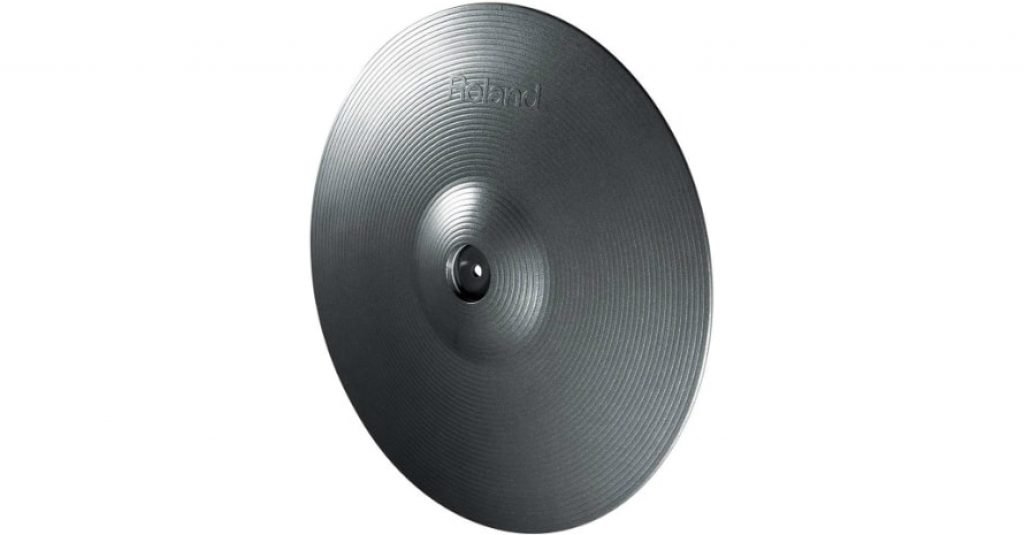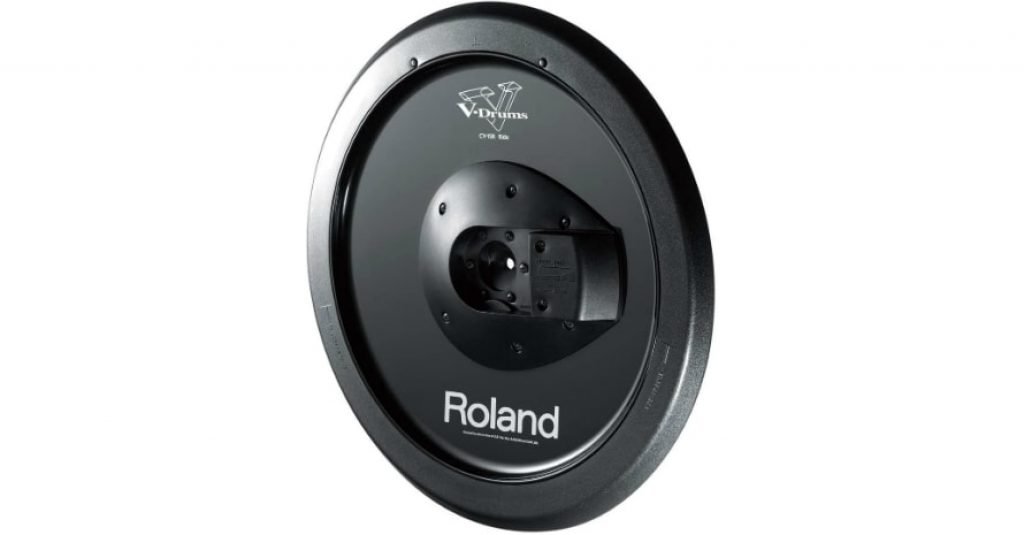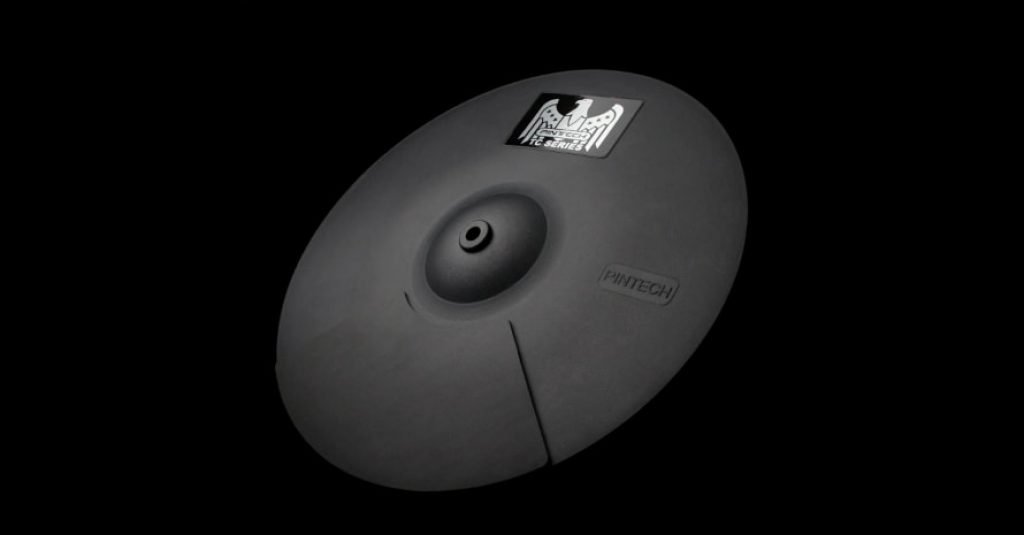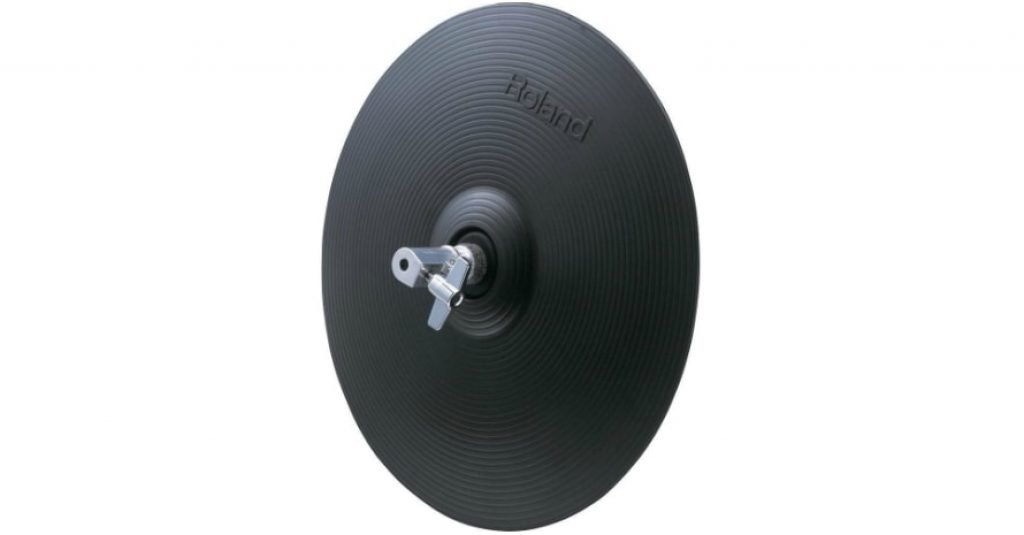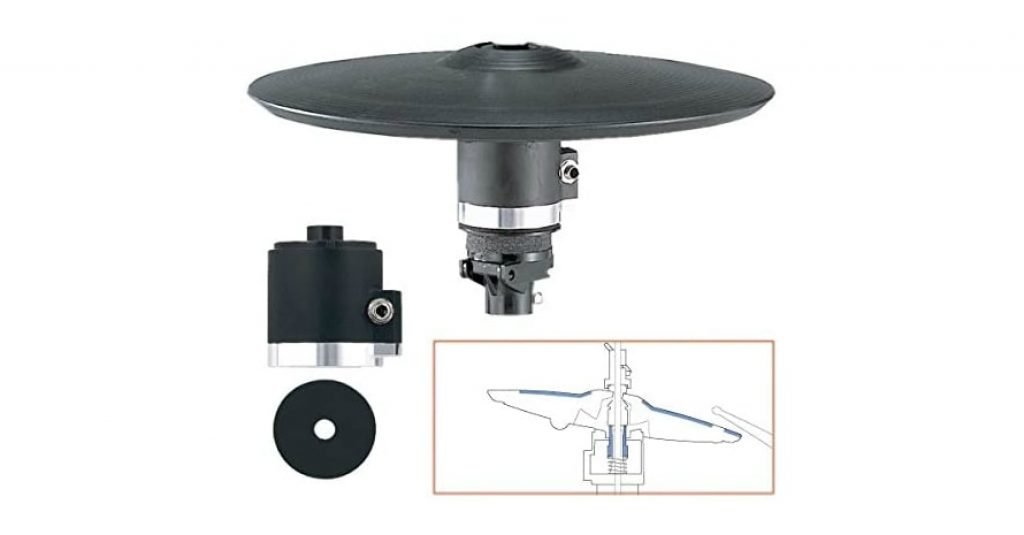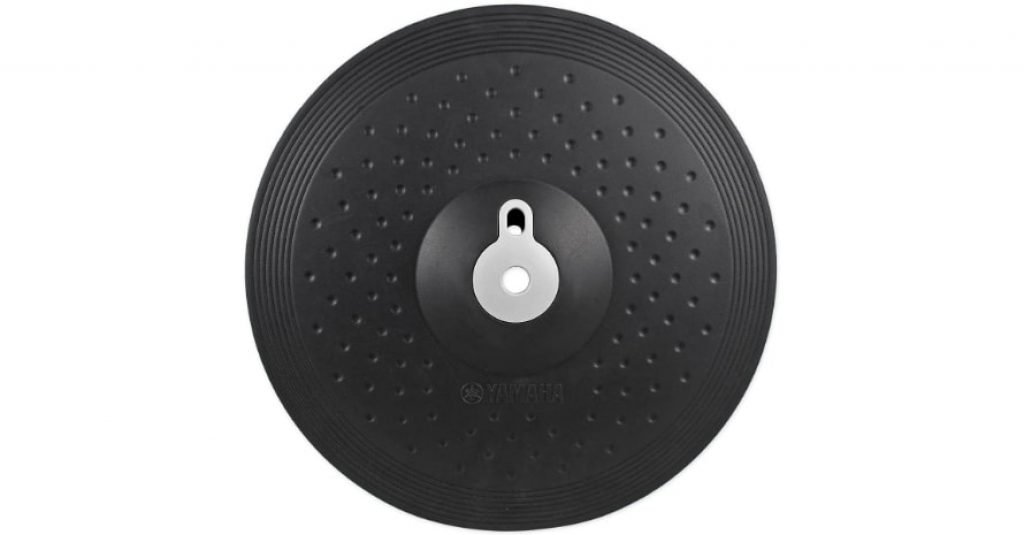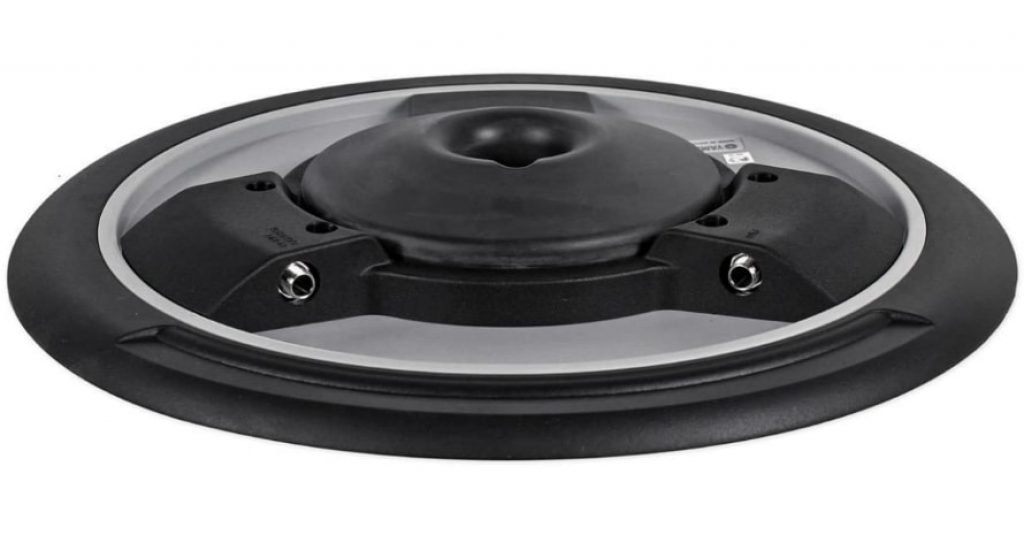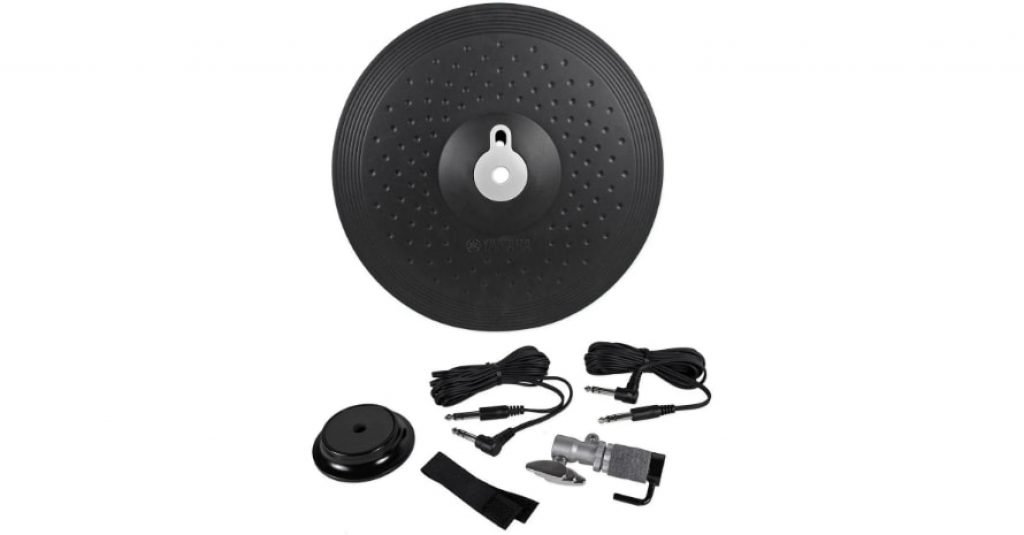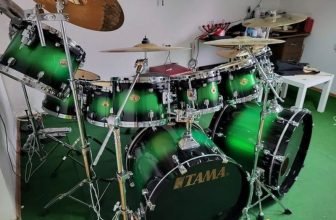If you are thinking of getting a personalized electronic drum set, cymbals are something you cannot miss. Luckily, technology has advanced greatly over time. E-cymbals have never been so close to the authentic feel and sound of their acoustic counterpart, and, most importantly, the days where you would have to pay ridiculous amounts of money just for the “electronic” part of the title are long gone.
But how do you choose the best electronic cymbals for your setting?
For those who are short of time, you just can’t go wrong with Roland CY-15R. I can’t recommend this model enough because it’s incredibly realistic and as near to the acoustic cymbal as reasonably possible with its three-way triggering mechanism.
Table could not be displayed.Designed to mimic the “real” ride cymbal, this 15-inch model might also become an efficient large crash cymbal. This is due to the ability to select between two double trigger systems.
I’ve included comprehensive, first-hand reviews of another four excellent models, too, which you might find helpful depending on your priorities.
There’s also an electric cymbal shopping guide for your reference and an FAQ section where I answer common questions about the many different drum cymbals and related topics.
Five Best E-Cymbal Models Reviewed
Contents
Here’s my personal top 5 list of electronic cymbals. While it’s true that no two drummers are the same, I do believe you’ll find something for your preferred setting, whether you are an amateur willing to improve your practice routine or a pro player who needs a dependable electronic cymbal pack for recording and live to perform.
1. Roland CY-15R Electronic Cymbal: Top Pick
This 15-inch Roland cymbal emulating the traditional ride is part of a series that also includes other sizes and cymbal varieties such as splash and crash cymbals.
The well-made disk mimics the shape and inertia of a ride cymbal but can also double as a bigger crash one since it boasts a dual-trigger system where you can choose between edge/bow and bow/bell.
It comes with three triggering zones, enabling you to generate different sounds as you hit the edge, the bow, and the bell. The velocity-sensitive triggers are perfectly accurate. Most importantly, an amazing amount of effort has been put into recreating the wobble that’s associated with traditional ride cymbals.
If you want to stay capable of quickly transitioning to traditional play, this can be a great choice despite the reduced size of the disk (which is understandable given that many musicians resort to digital kits exactly because they save space).
The model is compatible with all sound modules in Roland’s TD and SPD series.
Despite the fact that it nears the high end of the price spectrum, possibly scaring off those who are only willing to invest limited sums of money or simply need a part-time doubler for their traditional equipment, I do believe the CY-15R deserves to lead the market due to its precise and true-to-life performance.
No products found.
Specifications:
- Size: 15-inch Ride
- Color: Black
- Item Weight: 5.5 Pounds
- Product Dimensions: 14.88 x 14.88 x 2 inches
- Material: Rubber
What’s included:
- Roland CY-15R Electronic Cymbal
- Highly realistic weight balance;
- Excellent triggering accuracy;
- Three-zone triggering system;
- Can act as a crash cymbal too;
- Well-made.
- On the pricey side;
- Some drummers would like it to be bigger for the sake of realism.
2. Pintech Percussion TC16: Decent Digital Cymbals on a Budget
It’s only natural that many beginner drummers don’t feel like getting an e-cymbal that costs half their full drum kit. Plastic cymbals by Pintech Percussion can be a money-saving solution that will last without compromising your experience too much.
The item is made in the USA and proudly guaranteed to never crack. Apart from decent craftsmanship, the TC16 16-inch cymbals (other sizes are available as well) provide for a reasonably realistic user experience with quality triggering.
It’s no wonder, given the price, that the model only has one triggering zone, but the tracking and dynamics are excellent, and so is the balance.
This is a versatile tool that works with standard stands and can be used as a splash, crash, or ride cymbal, the latest showing the weakest triggering performance. I also like how it’s not overly loud in acoustic terms even at low volume settings.
Overall, I recommend this simple yet solid cymbal to everyone looking for decent triggering and good weight balance on a budget.
No products found.
Specifications:
- Size: 16 in
- Color: 12 ounces
- Item Weight: Black
- Product Dimensions: 18 x 12 x 18 inches
- Material: Polymer
What’s included:
- Pintech Percussion TC16
- Highly affordable;
- Well-balanced;
- Versatile in terms of possible roles;
- Good accuracy;
- Not prone to cracking.
- Single triggering zone.
3. Yamaha PCY155: A Value-for-Money Electronic Drum Cymbal Pad
These 15-inch electronic cymbal pads by Yamaha come at quite an attractive price given how much they offer.
The item looks pretty solid and durable, and they feel it provides is reasonably realistic with good stick bouncing and a bit of wobble, although I find the No. 1 by Roland to be far more convincing.
When used with compatible DTX Yamaha modules as recommended, it offers highly accurate triggering, while those sticking to other drum module brands should expect mixed results with occasional trigger missing due to some differences in technology.
This cymbal allows for as many as three different tones and boasts a choke mimicking function. Paired with excellent dynamic recreation to distinguish between energetic hits and more delicate touches, this brings about nuanced, although somewhat too loud, performance given you have the right module.
No products found.
Specifications:
- Size: 15 in
- Color: Black
- Item Weight: 4.4 Pounds
- Product Dimensions: 16 x 17 x 4 inches
- Material: Pad Synthetic Rubber, Body PP Resin
What’s included:
- Yamaha PCY155
- Competitive price tag;
- Choking ability;
- Three trigger zones;
- Accurate given you use a compatible Yamaha module;
- Quite realistic.
- Louder than perfect;
- Can show sub-par performance with non-Yamaha sound modules.
4. Roland VH11: Dependable Hi-Hat Type Electronic Drum Cymbals
Another high-performance piece by Roland, this hi-hat is probably the best you can get within the price range.
The weighty, rubber-covered plate has a diameter of 12 inches and comes with a hi-hat clutch. Everything you need for assembly on a stand is included, and the procedure itself is pretty straightforward, although the unit might feel too heavy on some stands.
However, it offers a highly realistic weight balance and bounce, complete with highly accurate triggering that’s velocity-sensitive for excellent representation of how strong this or that hit was.
The item is only officially compatible with Roland-made modules. It can also be limiting in terms of hi-hand stand choice because a weak spring might prove restrictive. Otherwise, however, it’s a great, pro-grade tool at a moderate price.
No products found.
Specifications:
- Size: 12 in
- Color: Black
- Item Weight: 3.31 Pounds
- Product Dimensions: 12.36 x 12.36 x 4.06 inches
- Material: Playing surface – Rubber
What’s included:
- Roland VH11
- Compelling weight balance and bounce;
- Excellent triggering performance;
- Good at recreating dynamics;
- Built to last.
- Needs a stand with a good spring.
5. Yamaha RHH135: Affordable and Efficient Hi-Hat Drums with Cymbals
A more affordable alternative to Roland’s hi-hat e-cymbals, this model measures 13 inches across and has dual-zone sensitivity for a wide range of sounds. It’s also a hefty piece that is likely to require a really well-made stand to fully reveal its potential.
The hi-hat controller provides a realistic feel due to excellent velocity sensitivity with lots of nuances in hitting strength, including a foot splash option, and generally mimics the foot pedal control in a convincing manner.
Just like with rides, I feel that it’s somewhat inferior to Roland in terms of wobble and balance, but it’s still amazingly good given the price and can even meet the needs of a professional, especially when used with a DTX900/DTXTREME III module for a greater variety of sounds.
No products found.
Specifications:
- Size: medium
- Color: Black
- Item Weight: 5 Pounds
- Product Dimensions: 16 x 17 x 4 inches
- Material: Plastic
What’s included:
- Yamaha RHH135
- Affordable;
- Foot splash-friendly;
- Realistic dynamics;
- Great sound variety;
- Precise triggering.
- Requires a solid stand;
- Not the most convincing weight balance out there.
A Shopper’s Guide to E-Cymbals
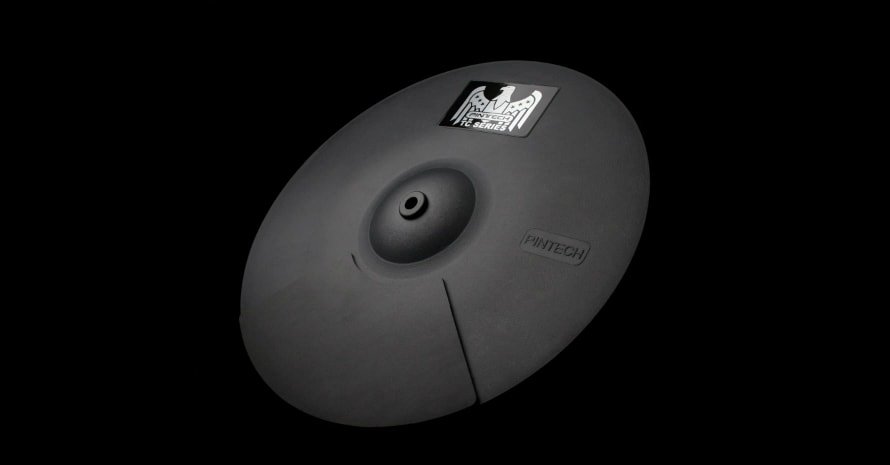
If you feel unsure as to what to look for in electronic cymbals, be sure to factor in the criteria described below. What matters most will certainly depend on the expected setting, though.
Tips on How to Choose Electronic Cymbals
When it comes to buying e-cymbals, there’s an inevitable tradeoff between realism and price. Most players appreciate the authenticity of sound and feel that comes with high-specced instruments in this category, which can be enhanced in many ways, such as the following.
Number of sensor zones
This parameter generally varies from one to three. The more cymbal triggers you have, the more diverse your sound range depending on where you hit the cymbal.
Velocity sensitivity
The feature enables your drums to sound in a distinct way depending on how hard you hit them and is rarely found in cheaper models. Many players agree that velocity sensitivity adds a lot of realism, so I suggest this as an investment-worthy option.
Weight balance
The way the cymbal is balanced on its stand defines how much of a realistic swing you can get by hitting it. While not directly related to sound quality, this parameter can be crucial to playability for some drummers.
Choke control
This refers to the ability to cut off the sound right after hitting the signal for a more abrupt effect. The technique is believed to be a cymbal rudiment, that is, a fundamental field cymbal playing technique, and is used in a variety of styles, so you probably don’t want to miss out on it.
Apart from these accuracy-related parameters, it’s essential that the cymbals that you invest in match your drum kit and your primary purpose. This is how you determine the necessary size and whether you need an electronic ride cymbal or, say, a hi-hat or a couple of bright accents.
Finally, don’t forget to check the quality and craftsmanship of the model you are considering. While Roland cymbals are generally very well-built and reliable, lower prices usually come at a cost. This includes the material of the disk itself as well as the mounting hardware.
My idea of a perfect e-cymbal shopping tour includes some preliminary testing whenever possible to find out whether the model just feels “right” to you.
Why You Need Electronic Cymbals
Now that you know how many things there are to factor in, you might be wondering if you need e-cymbals at all. Yes, you do!
While traditional cymbals do have certain advantages, electronic drum manufacturers have made a move in the right direction lately, bringing the experience they offer closer to the “real” play.
What you get is therefore a mix of increased comfort and control as well as a more or less realistic feel. When I say comfort and control, I mean the ability to keep the level of noise that you make in check. With e-cymbals, you can also make use of existing software for deeper, more versatile sound.
FAQ: Electronic Cymbals and More
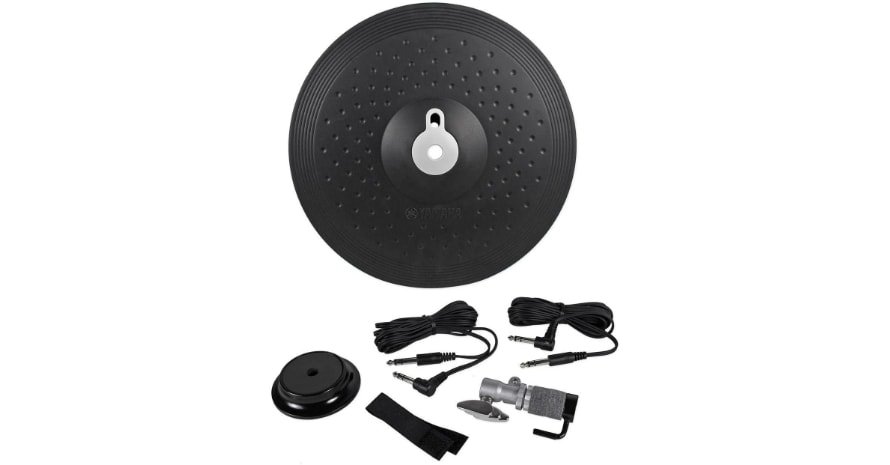
People often ask me questions about electronic drums that, of course, include e-cymbals, which I think expect to be of relevance to other users as well. Here are my answers to four of those that I hear really often. Feel free to post yours in the comments section, though.
What are cymbals with holes called?
While it’s become not uncommon for drummers to cut holes in their cymbals, and there are some ready-made perforated models, it’s hard to tell what their official name is. Most people refer to them as cut-out cymbals.
It’s generally believed that perforation can influence the way your cymbals sound, depending on how the holes are located and whether or not they are symmetrical (research has been carried out to demonstrate the effect of cut-outs on frequency in brass models).
Many players associate the effect with a “trashy” quality to the sound, obviously in a good way. Since cut-out cymbals are most commonly accent ones, the name “trash crash” seems to have stuck to the variety.
Can you add cymbals to an electronic drum set?
You absolutely can as long as there are no connectivity problems. As Roland points out in its own e-drum FAQ, there’s nothing to prevent you from adding more sophisticated toms and cymbals to its higher-end drum sets.
It’s not an uncommon practice among drummers since more triggers translate to a greater range of sounds at your fingertips. Just make sure the kit that you have or are going to purchase has enough additional inputs for such extensions, and pay attention to compatibility information when choosing the cymbals to go with it.
Can you mix and match electronic drums?
The mix-and-match approach has its supporters and detractors in the drummer community. There’s no reason why you cannot try mixing e-drums made by different brands or belonging to different product lines, provided that they are mutually connectible. Some people emphasize that this produces a sound that’s heterogeneous in a bad way, though.
Does an electronic drum kit need an amp?
You can go without an amplifier if you always wear headphones, which might be acceptable for practice but not live performances. While some drummers use guitar amps for this purpose, it’s not a way to live if you like to enjoy the full variety of sounds produced by your kit. My recommendation is that you invest in a drum amplifier.
E-Cymbal Sum-Up
If you need a reliable electronic cymbal as part of your kit, the 15-inch Roland CY-15R has it all. While somewhat on the expensive side, the model offers enough realism for drum enthusiasts and professional musicians alike without having the punishing price tag associated with some premium options.
However, there are even more affordable alternatives out there, including excellent hi-hat options to replace the not-nearly-realistic ones in ready-made kits.
As a musician and blogger, I’m really interested in learning my fellow drummers’ opinion. What’s your key criterion for an e-cymbal? Share your ideas in the comments section down below!
